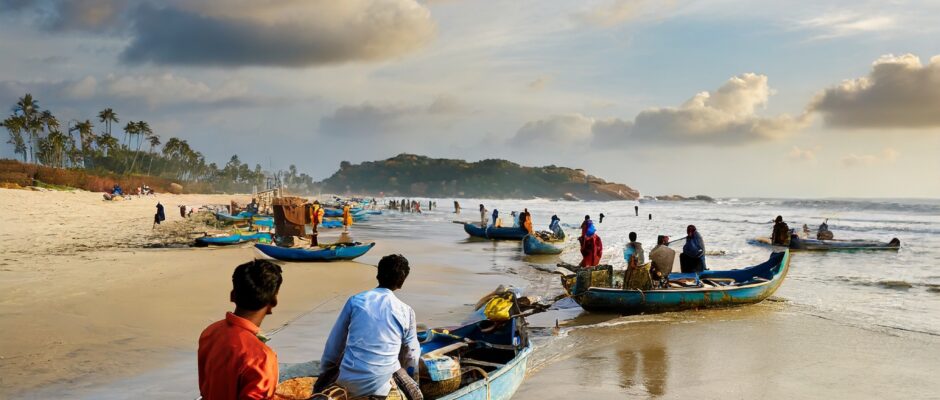Goa’s Seafood Exports Decline by 14% Amid Global Challenges and Shifting Consumer Preferences
Panaji: Goa’s seafood exports, which had been on a steady rise over the past five years, faced a significant setback in the 2023-24 fiscal year, with a 14% decline in export volumes. After reaching a peak of 63,333 tonnes worth ₹1,00,761 lakh in 2022-23, the export figures dropped to 55,167 tonnes, generating ₹93,420 lakh in 2023-24, according to data from the Marine Products Export Development Authority (MPEDA). Experts attribute this decline to a combination of global pressures, including fluctuating market demands, regulatory shifts, and the lasting impact of the COVID-19 pandemic on consumer preferences. “The global seafood market is undergoing rapid changes, especially in the post-pandemic era, where consumer preferences have shifted significantly,” noted Prof. Anantha Sreepada, a retired senior principal scientist at the National Institute of Oceanography (NIO). He pointed out that these changing preferences have led to a reduction in the minimum quantities of certain seafood items in the overall export basket. Sreepada emphasized the need for the industry to adapt to these evolving consumer demands to bridge the 14% export gap. “To sustain and grow, the industry must cater to the new consumer expectations in the global seafood market,” he added. The decline in exports has also been linked to geopolitical factors. Maulana Ibrahim, president of the Seafood Exporters Association of India (Goa region), highlighted the impact of ongoing global conflicts and financial instability. “Despite a strong landing of cephalopods last year, the export market struggled due to the wars in Gaza and Ukraine, as well as broader economic challenges,” Ibrahim explained. Cephalopods, including cuttlefish and squids, are significant export items from Goa. Cuttlefish production saw steady growth, increasing from 1,846 tonnes in 2022 to 2,252 tonnes in 2023. However, frozen cuttlefish exports fell dramatically, from 1,265 tonnes worth ₹3,813 lakh in 2018-19 to just 600 tonnes valued at ₹192 lakh in 2023-24. Similarly, frozen squid exports, while showing an increase in quantity—from 5,746 tonnes worth ₹12,216 lakh in 2018-19 to 18,399 tonnes worth ₹7,852 lakh in 2023-24—did not translate into higher profits. “The price of squids dropped by 35% this year, significantly impacting our profits,” Ibrahim noted. He also mentioned that European countries, traditionally major buyers, have reduced their cephalopod imports by nearly half since the pandemic, further straining the industry. The seafood sector in Goa is heavily labor-intensive, and Ibrahim called for export incentives, subsidies, and policy reforms to boost growth and competitiveness in the global market. Despite these challenges, certain categories within the seafood industry have shown resilience. The frozen fresh fish segment, for instance, experienced substantial growth, expanding from 24,289 tonnes valued at ₹33,843 lakh in 2018-19 to 60,949 tonnes worth ₹40,487 lakh in 2023-24. Frozen shrimp exports also saw impressive growth, with quantities jumping from 1,908 tonnes valued at ₹7,392 lakh in 2018-19 to 19,015 tonnes worth ₹5,035 lakh in 2022-23. As the industry grapples with these global pressures, the focus on adapting to changing consumer preferences and navigating geopolitical challenges will be crucial for the future of Goa’s seafood exports.


